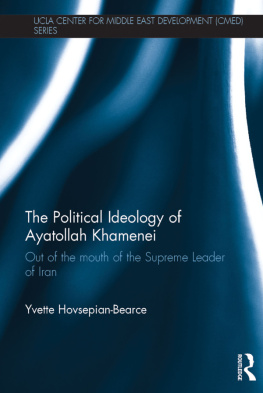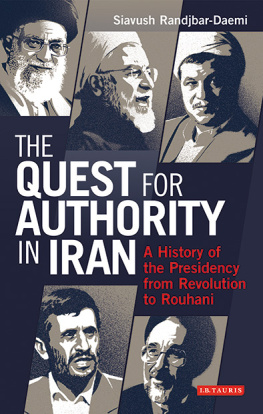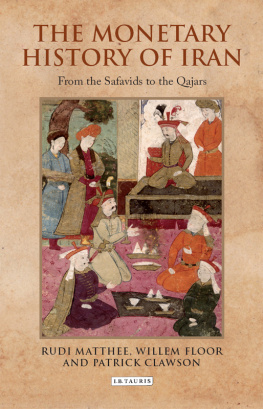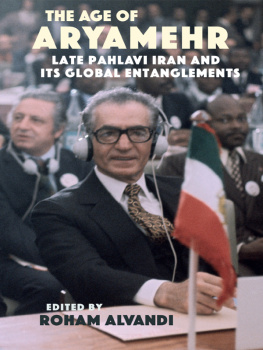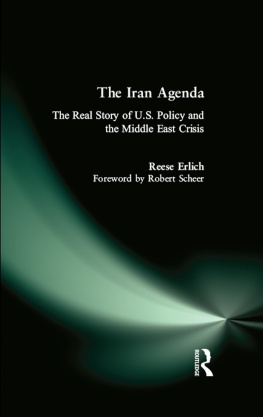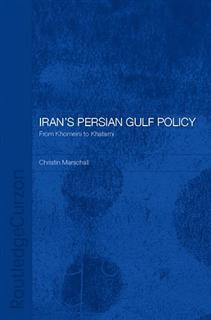More than three decades after the Iranian Revolution reconfigured the strategic landscape in the Middle East, scholars are still trying to decipher its aftereffects. Suzanne Maloney provides the first comprehensive overview of Iran's political economy since the 1979 revolution and offers detailed examinations of two aspects of the Iranian economy of direct interest to scholars and nonspecialist readers of Iran: the energy sector and the role of sanctions. Based on the author's research and experience as both a scholar and government adviser, the book features the evolution of the Islamic Republic from its revolutionary beginnings to a system whose legitimacy is grounded in its ability to deliver development and opportunity to its cititzenry. Moving chronologically from the early years under Khomeini, through the economic deprivations of the 1980s during the Iran-Iraq War, through liberalization under Khatami, to the present, Maloney offers fascinating insights into Iran's domestic politics and how economic policies have affected ideology, leadership priorities, and foreign relations.
Suzanne Maloney is a senior Fellow at the Brookings Institution Center for Middle East Policy.
Brookings Institution, Washington, D.C.
32 Avenue of the Americas, New York, NY 10013-2473, USA
Cambridge University Press is part of the University of Cambridge.
It furthers the University's mission by disseminating knowledge in the pursuit of education, learning, and research at the highest international levels of excellence.
www.cambridge.org
Information on this title: www.cambridge.org/9780521738149
Suzanne Maloney 2015
This publication is in copyright. Subject to statutory exception and to the provisions of relevant collective licensing agreements, no reproduction of any part may take place without the written permission of Cambridge University Press.
First published 2015
Printed in the United States of America
A catalog record for this publication is available from the British Library.
Library of Congress Cataloging in Publication Data
Maloney, Suzanne.
Irans political economy since the revolution / Suzanne Maloney (Brookings Institution, Washington, DC).
pages cm
ISBN 978-0-521-50634-2 (Hardback) ISBN 978-0-521-73814-9 (Paperback) 1. IranEconomic policy. 2. IranPolitics and government1979-1997. 3. IranPolitics and government1997 4. IranHistoryRevolution, 1979Influence. 5. Energy industriesIran. 6. Economic sanctionsIran. 7. Iran-Iraq War, 19801988Economic aspects. I. Title.
HC 475. M 314 2015
330.955dc23
2014040461
ISBN 978-0-521-50634-2 Hardback
ISBN 978-0-521-73814-9 Paperback
Cambridge University Press has no responsibility for the persistence or accuracy of URL s for external or third-party Internet Web sites referred to in this publication and does not guarantee that any content on such Web sites is, or will remain, accurate or appropriate.
Contents
Introduction
During the summer of 2012, the Islamic Republic of Iran was rocked by a crisis over chicken. As the world ratcheted up pressure on Iran in hopes of forcing its government to abandon its nuclear program, the fallout from the latest round of international sanctions rippled throughout the Iranian economy. The currency crashed, inflation spiked, and the primary engine of the country's wealth its oil exports plummeted by nearly 50 percent. Although sanctions, particularly those imposed by Washington, have been a prominent feature of the economic landscape here almost since the inception of the revolutionary state more than three decades earlier, no previous measures had delivered such an immediate, dramatic, or far-reaching blow.
In this charged environment, the skyrocketing price of chicken, which soared as high as three times its cost only a year earlier, emerged as a kind of shorthand for a newly urgent public debate over the economy, the government, and, by extension, the future of Iran. From the Friday prayers pulpit, the Iranian leadership's favored instrument of communication, clerics appealed to Iranians to abstain from chicken and eat more vegetables instead, while others denounced the price spike as an enemy plot.
The uproar seemed a suitably ironic denouement for a state whose founder, Ayatollah Ruhollah Khomeini, and Western policy makers, it was truly a case of chickens coming home to roost; the tragicomic implosion of the Iranian economy represented the potential vindication of the American strategy for thwarting Tehran's nuclear ambitions and offered long-awaited evidence that the Islamic Republic's manifold failings would ultimately prove the seeds of its own destruction.
However, behind the headlines, the reality of revolutionary Iran proved more multifaceted than the cursory media coverage might have suggested. Not for the first time, the country's course deviated from the presumptive script. In fact, the much-hyped chicken revolution did not transpire. A closer examination of the episode reveals a more complex array of causes, including but hardly limited to sanctions, and the regime's crisis management suggests something other than the inevitable demise of the Islamic Republic. First, the regime mounted a robust response to public hardship. Senior Iranian officials participated in crisis summitry to devise and implement damage control, and Iran's embattled institutions of civil society and representative rule its newspapers and bloggers, its pork-barrel parliament moved into high gear to press for improvements and highlight related problems. Despite the restrictions on its international trade and financial access, Tehran managed to procure imported chicken from allies, including Turkey and Brazil, and quickly sought to distribute it at a subsidized price. As they waited in the sort of ration lines that had not existed since the 198088 war with Iraq, Iranians continued to vent their outrage at the indignity of rising prices and low supplies. However, for the most part they remained unwilling to risk their lives or their livelihoods to translate their dissatisfaction into a direct challenge to the ruling system. Moreover, the chicken controversy did not have an immediately salutary effect on Iran's readiness to resolve the nuclear standoff.
To the disappointment of many, both inside Iran and beyond, the great Iranian chicken crisis of 2012 unfolded somewhat differently from initial expectations. Mitigation, improvisation, and the surprising capacity of Iran's postrevolutionary institutions enabled the Islamic Republic to survive yet another test of its endurance. This outcome does not contradict a core underlying reality of contemporary Iran: Sanctions have exacted a tremendous toll on a state whose political and economic development is already distorted by the epic turmoil and mismanagement of the postrevolutionary era. Even the most orthodox defenders of the Islamic Republic have been forced to alter their traditional blustering denial and acknowledge that the measures targeting Iran's access to the international financial system and its oil sector hit home. Sanctions have bound the horizons of the Islamic Republic, and for the foreseeable future, they will determine the opportunities of the Iranian people.
However, these sanctions have not played out in predictable fashion, and Iran's aborted chicken upheaval offers a reminder that the world has once again failed to anticipate the trajectory of the Islamic Republic's internal agonies. And it underscores the utility of developing a more nuanced understanding of Iran's political economy. As this episode demonstrates, the economy lies at the heart of the challenge facing Iranians as they survey their future, and for the world in seeking to influence the decisions of Iran's leaders. However, the formula for inducing moderation remains elusive, and the relationship between economic challenges and political change in Iran has proven more complicated than the crude logic of external economic pressure.







